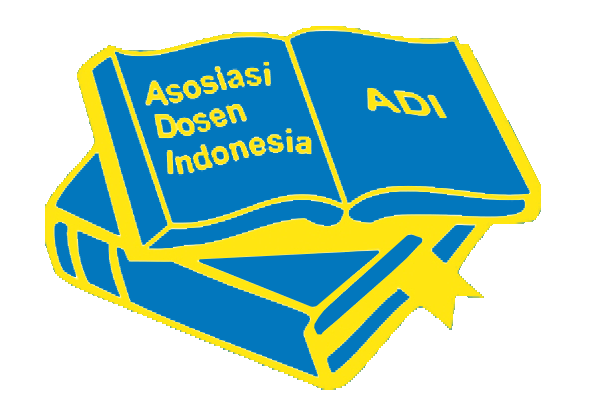Effect Of 12 Station Circuit Training On Antopometry Obesity (Case Study)
Abstract
Obesity was degenerative issues in the communities. The research gave treatment 12 stations. Two samples, one over weight and obese the othe one. This research applied eksperiment with cirkuit 12 station, three sets and 16 time training. The intensity of training was 75%. Data analyzed by descriptive statistic. Research showed that the subjek with obese category weight loss 20 kg and 0.5 kg for the othe one. Two subjek were reduce in skin fold antropometry measurements (chest, abdomen, thight) also in around abdomen and hip. One subjek hipertropy in thigth Gastronemius and bicep triceps, ones subjek were hypertropi in the bicep tricep. Based on the case concluded, witth 75% intensity could be reduce weight and skinfold measurements result.
References
A. Alahmadi, M. (2014). High-intensity Interval Training and Obesity. Journal of Novel Physiotherapies, 4(3), 1–6. https://doi.org/10.4172/2165-7025.1000211
Aceves-Martins, M., Llauradó, E., Tarro, L., Solà, R., & Giralt, M. (2016). Obesity-promoting factors in Mexican children and adolescents: Challenges and opportunities. Global Health Action. https://doi.org/10.3402/gha.v9.29625
Ahirwar, R., & Mondal, P. R. (2019). Prevalence of obesity in India: A systematic review. Diabetes and Metabolic Syndrome: Clinical Research and Reviews, 13(1), 318–321. https://doi.org/10.1016/j.dsx.2018.08.032
Alaa Youssef Ahmed Ahmed Baioumi. (2019). Comparing Measures of Obesity: Waist Circumference, Waist-Hip, and Waist-Height Ratios. Nutrition in the Prevention and Treatment of Abdominal Obesity (Second Edition), 29–40. https://doi.org/https://doi.org/10.1016/B978-0-12-816093-0.00003-3
Batrakoulis, Alexios; Jamurtas, Athanasios Z; Georgakouli, Kalliopi; Dimitrios Draganidis; Deli, C. K. et al. (2018). High intensity, circuit-type integrated neuromuscular training alters energy balance and reduces body mass and fat in obese women: A 10-month training-detraining randomized controlled trial. PMID, 23;13(l). https://doi.org/10.1371/journal.pone.0202390
Bell, J. A., Hamer, M., Van Hees, V. T., Singh-Manoux, A., Kivimäki, M., & Sabia, S. (2015). Healthy obesity and objective physical activity. American Journal of Clinical Nutrition, 102(2), 268–275. https://doi.org/10.3945/ajcn.115.110924
Blüher, M. (2019). Obesity: global epidemiology and pathogenesis. Nature Reviews Endocrinology, 15, 288–298. https://doi.org/10.1038/s41574-019-0176-8
Cerika, R. (2011). Kaitan antara Obesitas dan Aktivitas Fisik. Medikora.
Chang, C. K., Borer, K., & Lin, P. J. (2017). Low-Carbohydrate-High-Fat Diet: Can it Help Exercise Performance? Journal of Human Kinetics. https://doi.org/10.1515/hukin-2017-0025
Dabas, A., & Seth, A. (2018). Prevention and Management of Childhood Obesity. Indian Journal of Pediatrics, 85, 546–553. https://doi.org/10.1007/s12098-018-2636-x
de Mello, A. H., Costa, A. B., Engel, J. D. G., & Rezin, G. T. (2018). Mitochondrial dysfunction in obesity. Life Sciences, 192, 26–32. https://doi.org/10.1016/j.lfs.2017.11.019
Dias, K. A., Coombes, J. S., Green, D. J., Gomersall, S. R., Keating, S. E., Tjonna, A. E., … Ingul, C. B. (2016). Effects of exercise intensity and nutrition advice on myocardial function in obese children and adolescents: A multicentre randomised controlled trial study protocol. BMJ Open. https://doi.org/10.1136/bmjopen-2015-010929
Dias, K. A., Ingul, C. B., Tjønna, A. E., Keating, S. E., Gomersall, S. R., Follestad, T., … Coombes, J. S. (2018). Effect of High-Intensity Interval Training on Fitness, Fat Mass and Cardiometabolic Biomarkers in Children with Obesity: A Randomised Controlled Trial. Sports Medicine, 48, 733–746. https://doi.org/10.1007/s40279-017-0777-0
Feito, Yuri; Heinrich, Katie M; Butcher, Scotty J; Poston, W. S. C. (2018). High-Intensity Functional Training (HIFT): Definition and Research Implications for Improved Fitness. MDPI, 6(3), 76. https://doi.org/10.3390/sports6030076
Fernandes, I. M. da C., Pinto, R. Z., Ferreira, P., & Lira, F. S. (2018). Low back pain, obesity, and inflammatory markers: Exercise as potential treatment. Journal of Exercise Rehabilitation, 14(2), 167–174. https://doi.org/10.12965/jer.1836070.035
Ford, N. D., Patel, S. A., & Narayan, K. M. V. (2017). Obesity in Low- and Middle-Income Countries: Burden, Drivers, and Emerging Challenges. Annual Review of Public Health, 38, 145–164. https://doi.org/10.1146/annurev-publhealth-031816-044604
González-Muniesa, P., Mártinez-González, M. A., Hu, F. B., Després, J. P., Matsuzawa, Y., Loos, R. J. F., … Martinez, J. A. (2017). Obesity. Nature Reviews Disease Primers, 3, 17034. https://doi.org/10.1038/nrdp.2017.34
Gorostegi-Anduaga, I., Corres, P., MartinezAguirre-Betolaza, A., Pérez-Asenjo, J., Aispuru, G. R., Fryer, S. M., & Maldonado-Martín, S. (2018). Effects of different aerobic exercise programmes with nutritional intervention in sedentary adults with overweight/obesity and hypertension: EXERDIET-HTA study. European Journal of Preventive Cardiology, 25(4). https://doi.org/10.1177/2047487317749956
Hilbert, A., Braehler, E., Schmidt, R., Lowe, B., Hauser, W., & Zenger, M. (2015). Self-Compassion as a Resource in the Self-Stigma Process of Overweight and Obese Individuals. Obesity Facts. https://doi.org/10.1159/000438681
Kirwan, J. P., Sacks, J., & Nieuwoudt, S. (2017). The essential role of exercise in the management of type 2 diabetes. Cleveland Clinic Journal of Medicine, 84(7), S15–S21. https://doi.org/10.3949/ccjm.84.s1.03
Lanigan, J., Tee, L., & Brandreth, R. (2019). Childhood obesity. Medicine (United Kingdom), 47(3), P190-194. https://doi.org/10.1016/j.mpmed.2018.12.007
Magalhães, J. P., Júdice, P. B., Ribeiro, R., Andrade, R., Raposo, J., Dores, H., … Sardinha, L. B. (2019). Effectiveness of high-intensity interval training combined with resistance training versus continuous moderate-intensity training combined with resistance training in patients with type 2 diabetes: A one-year randomized controlled trial. Diabetes, Obesity and Metabolism, 21(3), 550–559. https://doi.org/10.1111/dom.13551
Maïano, C., Lepage, G., Aimé, A., Bayard, C., Dansereau-Trahan, É., Granger, L., … Morin, A. J. S. (2018). Perceived weight-related victimization and physical activity outcomes among adolescents with overweight and obesity: Indirect role of perceived physical abilities and fear of enacted stigma. Psychology of Sport and Exercise, 34, 70–78. https://doi.org/10.1016/j.psychsport.2017.08.007
Navalpotro, L., Regidor, E., Ortega, P., Martínez, D., Villanueva, R., & Astasio, P. (2012). Area-based socioeconomic environment, obesity risk behaviours, area facilities and childhood overweight and obesity. Socioeconomic environment and childhood overweight. Preventive Medicine, 55(2), 102–107. https://doi.org/10.1016/j.ypmed.2012.05.012
Ndanuko, R. N., Tapsell, L. C., Charlton, K. E., Neale, E. P., & Batterham, M. J. (2016). Dietary patterns and blood pressure in adults: A systematic review and meta-analysis of randomized controlled trials. Advances in Nutrition, 7(1), 76–89. https://doi.org/10.3945/an.115.009753
Nigatu, Y. T., Reijneveld, S. A., De Jonge, P., Van Rossum, E., & Bültmann, U. (2016). The combined effects of obesity, abdominal obesity and major depression/anxiety on health-related quality of life: The lifelines cohort study. PLoS ONE. https://doi.org/10.1371/journal.pone.0148871
Nystoriak, M. A., & Bhatnagar, A. (2018). Cardiovascular Effects and Benefits of Exercise. Frontiers in Cardiovascular Medicine, 5, 135. https://doi.org/10.3389/fcvm.2018.00135
Obert, J., Pearlman, M., Obert, L., & Chapin, S. (2017). Popular Weight Loss Strategies: a Review of Four Weight Loss Techniques. Current Gastroenterology Reports, 19, 61. https://doi.org/10.1007/s11894-017-0603-8
Quist, J. S., Rosenkilde, M., Gram, A. S., Blond, M. B., Holm-Petersen, D., Hjorth, M. F., … Sjödin, A. (2019). Effects of Exercise Domain and Intensity on Sleep in Women and Men with Overweight and Obesity. Journal of Obesity, 12, 2019. https://doi.org/10.1155/2019/2189034
Roh, H. T., Cho, S. Y., & So, W. Y. (2017). Obesity promotes oxidative stress and exacerbates blood-brain barrier disruption after high-intensity exercise. Journal of Sport and Health Science, 6(2), 225–230. https://doi.org/10.1016/j.jshs.2016.06.005
Shepherd, E., Gomersall, J. C., Tieu, J., Han, S., Crowther, C. A., & Middleton, P. (2017). Combined diet and exercise interventions for preventing gestational diabetes mellitus. Cochrane Database of Systematic Reviews, (11), CD010443. https://doi.org/10.1002/14651858.CD010443.pub3
Spyridaki, E. C., Avgoustinaki, P. D., & Margioris, A. N. (2016). Obesity, inflammation and cognition. Current Opinion in Behavioral Sciences, 9, 169–175. https://doi.org/10.1016/j.cobeha.2016.05.004
Staiano, A. E., Marker, A. M., Beyl, R. A., Hsia, D. S., Katzmarzyk, P. T., & Newton, R. L. (2017). A randomized controlled trial of dance exergaming for exercise training in overweight and obese adolescent girls. Pediatric Obesity, 12(2), 120–128. https://doi.org/10.1111/ijpo.12117
Su, LiQiang; JinMei Fu; Sun, ShunLi; Zhao, GuangGao; Cheng, W. et al. (2019). Effects of HIIT and MICT on cardiovascular risk factors in adults with overweight and/or obesity: A meta-analysis. PLoS One; San Francisco, Vol. 14(I). https://doi.org/10.1371/journal.pone.0210644
Tri, I., Ronald, H., & Ray, D. (2018). Aktivitas Fisik yang Tinggi Dapat Mengatasi Obesitas Sentral. Pendidikan Jasmani Olahraga. https://doi.org/10.17509/jpjo.v3i1.10461
Türk, Y., Theel, W., Kasteleyn, M. J., Franssen, F. M. E., Hiemstra, P. S., Rudolphus, A., … Braunstahl, G. J. (2017). High intensity training in obesity: a Meta-analysis. Obesity Science and Practice, 3(3), 258–271. https://doi.org/10.1002/osp4.109
Vaamonde, J. G., & Álvarez-Món, M. A. (2020). obesity and overweight. Medicine (Spain), 13(14), 767–776. https://doi.org/10.1016/j.med.2020.07.010
Van Vuuren, C. L., Wachter, G. G., Veenstra, R., Rijnhart, J. J. M., Van Der Wal, M. F., Chinapaw, M. J. M., & Busch, V. (2019). Associations between overweight and mental health problems among adolescents, and the mediating role of victimization. BMC Public Health, 19, 612. https://doi.org/10.1186/s12889-019-6832-z
Verheggen, R. J. H. M., Maessen, M. F. H., Green, D. J., Hermus, A. R. M. M., Hopman, M. T. E., & Thijssen, D. H. T. (2016). A systematic review and meta-analysis on the effects of exercise training versus hypocaloric diet: distinct effects on body weight and visceral adipose tissue. Obesity Reviews. https://doi.org/10.1111/obr.12406
Villablanca, P. A., Alegria, J. R., Mookadam, F., Holmes, D. R., Wright, R. S., & Levine, J. A. (2015). Nonexercise activity thermogenesis in obesity management. Mayo Clinic Proceedings, 90(4), P509-519. https://doi.org/10.1016/j.mayocp.2015.02.001
Wang, Y., & Lim, H. (2012). The global childhood obesity epidemic and the association between socio-economic status and childhood obesity. International Review of Psychiatry. https://doi.org/10.3109/09540261.2012.688195
Wewege, M., van den Berg, R., Ward, R. E., & Keech, A. (2017). The effects of high-intensity interval training vs. moderate-intensity continuous training on body composition in overweight and obese adults: a systematic review and meta-analysis. Obesity Reviews, 18(6), 635–646. https://doi.org/10.1111/obr.12532
Zobel, E. H., Hansen, T. W., Rossing, P., & von Scholten, B. J. (2016). Global Changes in Food Supply and the Obesity Epidemic. Current Obesity Reports, 5, 449–455. https://doi.org/10.1007/s13679-016-0233-8
Zulfiqar, A. C. (2014). Hubungan Indeks Massa Tubuh dengan Tingkat Kebugaran pada Mahasiswa Fakultas Kedokteran Angkatan 2011. Skripsi Fakultas Kedokteran Universitas Indonesia.
Copyright (c) 2020 Jp.jok (Jurnal Pendidikan Jasmani, Olahraga dan Kesehatan)

This work is licensed under a Creative Commons Attribution-ShareAlike 4.0 International License.
Authors retain copyright and grant the journal right of first publication with the work simultaneously licensed under a Creative Commons Attribution 4.0 International License that allows others to share the work with an acknowledgement of the work's authorship and initial publication in this journal.





.png)






